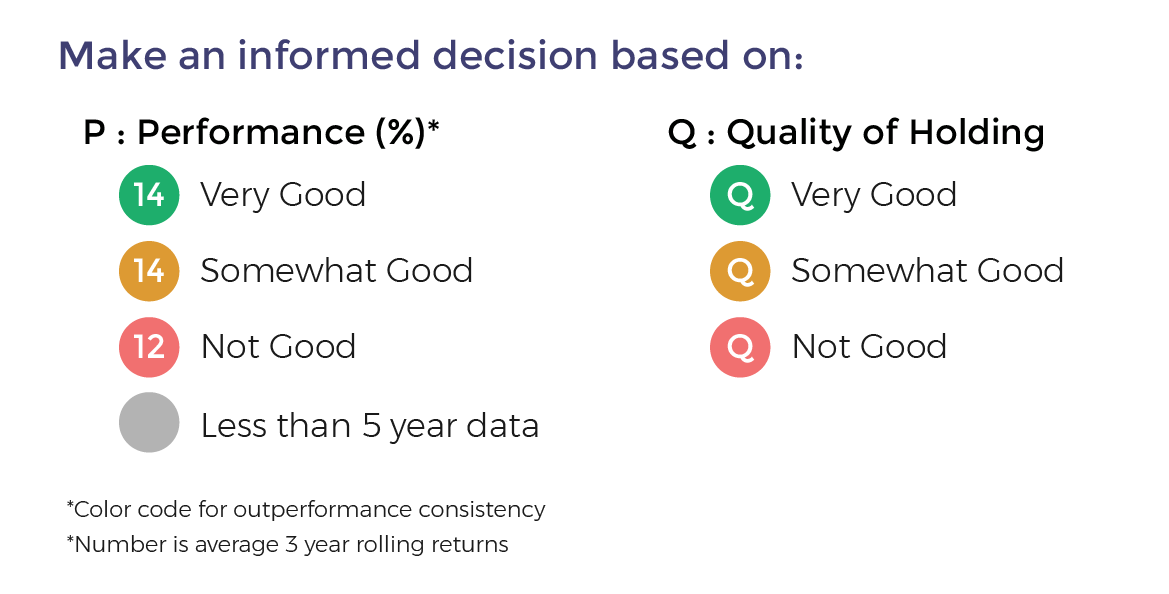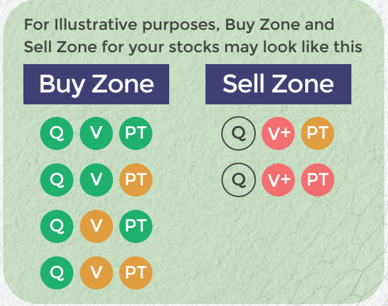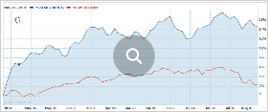Azad Engineering
- Azad Engineering is coming out with a 100% book building; initial public offering (IPO) of 1,45,47,545 shares of Rs 2 each in a price band Rs 499-524 per equity share.
- Not more than 50% of the issue will be allocated to Qualified Institutional Buyers (QIBs), including 5% to the mutual funds. Further, not less than 15% of the issue will be available for the non-institutional bidders and the remaining 35% for the retail investors.
- The issue will open for subscription on December 20, 2023 and will close on December 22, 2023.
- The shares will be listed on BSE as well as NSE.
- The face value of the share is Rs 2 and is priced 249.50 times of its face value on the lower side and 262 times on the higher side.
- Book running lead managers to the issue are Axis Capital, ICICI Securities, SBI Capital Markets and Anand Rathi Advisors.
- Compliance Officer for the issue is Ful Kumar Gautam.
Profile of the company
The company is one of the key manufacturers of its qualified product lines supplying to global original equipment manufacturers (OEMs) in the energy, aerospace and defence, and oil and gas industries, manufacturing highly engineered, complex and mission and life-critical components. It manufactures complex and highly engineered precision forged and machined components that are mission and life-critical and hence, some of its products have a “zero parts per million” defects requirement. As of September 30, 2023, it generated a revenue of Rs 1,142.92 million from sale of airfoils/ blades for the energy industry, which comprised of 72.00% of its revenue from operations. It competes with manufacturers from China, Europe, USA and Japan. Its customers include global OEMs across the energy, aerospace and defence, and oil and gas industries such as General Electric, Honeywell International Inc., Mitsubishi Heavy Industries, Ltd., Siemens Energy, Eaton Aerospace and MAN Energy Solutions SE.
The company’s products include 3D rotating airfoil/ blade portions of turbine engines and other critical components for (a) gas, nuclear and thermal turbines used in industrial applications or energy generation, and (b) defence and civil aircrafts and spaceships. The demand for such precision, forged and machined components is driven by requirements relating to energy turbines (industrial, gas, nuclear and coal), aircrafts (commercial and military), amongst others. Airfoils/ blades are one of the most critical 3D rotating and stationary parts of a turbine in the compression section. To sustain the high pressure, airfoils/ blades are made up of exotic/ super alloys and manufactured with a unique process designed by the company.
In the energy industry, the company produces high-precision rotating and stationary 3D airfoils/ blades, special machined parts and combustion component assemblies for land-based turbines with applications in industrial and energy plants using different fuel types such as nuclear, hydrogen, natural gas and thermal. The company’s aerospace and defence products include airfoils/ blades and components for engines, auxiliary power units (APUs), hydraulics, actuating systems, flight controls, fuel and inerting sections of commercial and defence aircrafts and spacecrafts, among other defence systems and various critical components for missiles. It has supplied critical components to major commercial aircraft manufacturers such as B737, B737 Max, B747, B777, B777X, A320, A350, A355, A350 XWB, Gulfstream G550 and are currently in discussions for supply of components for new engine platforms to various kinds of aircraft manufacturers. For the oil and gas industry, it manufactures components of drilling rigs such as drill bits and other critical components that are used in drilling equipment and are part of exploration and production phase.
Proceed is being used for:
- Funding capital expenditure of the company.
- Repayment/prepayment, in part or full, of certain of borrowings availed by the company.
- General corporate purposes.
Industry overview
Presently, the Indian electricity consumption is about 1,296 TWh, a 4% compounded annual growth from FY17. This growth rate is almost two times of the global consumption growth. There was a decline in demand in 2021 owing to COVID-19 pandemic. The rate of consumption of power is increasing, with India ranking third globally. Nearly 3/4th of the demand is still dependent on the conventional sources of fuel. Per-capita consumption in India is 1.3 MWh in FY22 as per CEA which a significant increase from about 0.63 MWh per capita in 2005. There is a huge opportunity to further increase this consumption as the global per capita consumption was 3.2 MWh in 2021. India has been an economy where services sector has contributed to majority of GDP, but services sector consumes comparatively lesser power. Moving ahead with the developing industrial sector, growth in population and increasing urbanization, India’s power demands will go up. The potential to push demand is high led by infrastructural development that India’s future beholds. The consumption according to CEA estimates would reach 1,610 TWh in the next 5 years & reach 2,133 MWh by FY32. The growth rate over the next 5 years would be 4.4% & further from 2027-2032 the CAGR is expected to be 6%, a growth rate thrice the global average.
Before the COVID-19 pandemic, the Indian air traffic experienced substantial growth, with a CAGR of approximately 19% during the period FY17-FY19. The market dipped during the pandemic, however there was quick recovery post the pandemic, with the passengers handled across all Indian airports in FY23 reaching approximately 96% of the pre-pandemic levels. It is projected that the domestic air traffic will continue to increase, and by FY30, it is estimated to reach 350 million passengers. Similarly, the international passenger numbers are also expected to rise significantly, reaching 160 million by FY30. Global in-service passenger aircraft fleet size in 2023 is around 27,000 across narrow, wide, regional jet and turbo-prop segments. Of this narrow and wide body aircrafts account for about 22,000. India’s share in these two segments stands at ~3%, with a fleet size of 630 (out of total 726 aircrafts). However, if the backlog orders are considered, Indian airline operators have around 1,100 planes on order with Airbus SE and The Boeing Company which translates to a share of ~9% of the global orderbook.
India ranks third in the world in terms of defence expenditure. The country’s need for extensive capabilities in defence sector arises primarily from having two neighboring countries Pakistan and China with nuclear capabilities and with whom India shares land boundary and has historically had border conflicts. India’s military expenditure as a share of GDP has been consistently around 2.5% over the last 5 years. India’s per capita spending on defence is about $58, which is the lowest among the top defence spending nations, but the per capita spending increased at a rate of 3.4% from 2018 to 2022. As per SIPRI estimates, Indian government allocates about 8.3% of its total spending towards military expenditure. Indian Government’s Union Budget of FY24 allocated Rs 5,93,538 crore towards Ministry of Defence (MoD). The MoD budget in India is split across defence services, MoD civil services and pensions. Defence services expenditure is the largest segment accounting for 73% allocation of the annual defence budget in FY24.
Pros and strengths
Engineered for success and preferred name in manufacturing of highly engineered, complex and mission and lifecritical high precision components for global OEMs: The company is one of the key manufacturers of its qualified product lines supplying to global OEMs primarily engaged in highly regulated industries, including energy, aerospace and defence and oil and gas industries, manufacturing highly engineered, complex and mission and life-critical components. In order to supply its products to its customers, it is required to undergo a part-by-part qualification process with each of them since its products are project and life critical in nature, to satisfy the stringent processes and quality requirements of its customers. The qualification process also includes an audit of its technical expertise and capability to manufacture the products as per the specifications of the customer. It is also required to qualify each part of the product which it intends to supply to its customers. The components being manufactured by it is high-precision and mission-critical and hence, some have a “zero parts per million” defects requirement.
Supplying to OEMs with high global market penetration: Based on the company’s deep market knowledge and continuing interactions with its long-standing customers, which gives it expansive insight into multiple industries, it serves as a critical source supplier for global OEMs. In Financial Year 2023, the company has supplied to customers which control approximately 70% of the gas turbine market (based on technology ownership and number of units ordered in first half of Fiscal 2022) globally and continue to supply to customers in this industry. It supplies components to five of the key manufacturers in the turbine manufacturing industry. The turbine and its component manufacturing industry has a two-tiered structure where there are large OEMs, which are involved in research and development, design, manufacturing, and assembly of turbines. There are also downstream manufacturing companies, such as the company, who have the capability of supplying a few critical components to the OEMs. Airfoils contribute to majority of the sales for the company. The company also supplies other special machined components for energy turbines.
Long-standing and deep customer relationships: The company has existing relationships with both Indian and global OEMs. Its long-standing customer base comprises leading product OEM companies, key strategic and globally preferred partners such as General Electric and Mitsubishi Heavy Industries, with whom it has an average relationship of over 10 years. Further, its integrated manufacturing and supply chain solutions together with its scale of operations, technical know-how, value added design and engineering expertise, allows it to cater to several Indian and global OEMs. It has a well-diversified customer base spread across various geographies. It has a broad customer base globally including in the USA, Europe, Japan, Middle East, United Kingdom and China. its enduring customer relationships serve as a clear testament to its commitment to quality, as well as its advanced design and precision manufacturing capabilities. Further, its domain expertise in various aspects such as precision engineering, research and development, as well as its adoption of technologically advanced and cost-competitive manufacturing processes have been instrumental in obtaining repeat orders from its key customer group.
Advanced manufacturing facilities: As of September 30, 2023, the company has manufacturing facilities in Hyderabad, Telangana in India which are spread across approximately 20,000 square metres and has a combined annual installed capacity of 642,310 hours per annum, annual actual production of 578,316 hours per annum and capacity utilization of 90 % per annum. It has stringent quality systems and processes which enable it to meet the rigorous and complex requirements of its customers within the stipulated timelines. Leveraging advanced machines and technologies, it is a prominent player in the industries in which it operates, with intricate engineering capabilities and production of high-quality components that meet the exacting demands of modern applications. Through continuous training and upskilling, its employees ensure that every step of the process is executed with precision and attention to detail. The company constantly strive to introduce innovations in its manufacturing processes, expansion of in-house capabilities to undertake forging and special processes and process efficiencies to reduce costs to ensure reduction in cost and lead times to manufacture a product. Consequently, this helps in increasing its revenues, margins, and profitability.
Risks and concerns
Subject to strict compliance of quality requirements: Given the nature of the company’s business and products, its customers have high and exacting standards for product quality, as well as delivery schedules. Adherence to quality standards is a critical factor in its manufacturing process as any defects in the products manufactured by the Company or failure to comply with the technical specifications of its customers may lead to termination of its contracts or cancellation of the orders placed by its customers. Certain customer contracts specify that it will be subject to penalties if it provide defective products. These quality specifications and contractual requirements include, among others, setting up robust process controls as specified by its customers. Additionally, its customers typically have stringent, time-consuming selection, inspection and review procedures for their products. These procedures include review of the manufacturer’s expertise, available manufacturing facilities, processes, financial capabilities and logistical capabilities. As a result of being subject to a stringent quality control mechanism at each stage of the manufacturing process, it is required to incur expenses to maintain its quality assurance systems such as forming a separate team of engineers responsible for quality and assurance in the manufacturing facilities, machineries, and in the manufacturing processes.
Face competition globally: The company faces competition globally in its business against other manufacturers of high precision and mission critical components manufacturing, which is based on many factors, including product quality and reliability, product design and innovation, technology, manufacturing capabilities, price and brand recognition. It competes with competitors to retain its existing business as well as to acquire new business. Some of its competitors may have certain advantages, including greater financial, technical and/ or marketing resources, which could enhance their ability to finance acquisitions, fund international growth, respond more quickly to technological changes and/ or operate in more diversified geographies and product portfolios. During periods of recession in the industries in which it operates, its customers may become more price sensitive. It may also be at a competitive disadvantage with respect to price when compared to manufacturers with lower cost structures, particularly those with more offshore facilities located where labour and other costs are lower.
Depend on third party suppliers for raw materials: The company is dependent on third party suppliers, including overseas suppliers, for the import and supply of its primary raw materials, plant, machinery and components, including aluminium, stainless steel, specialised steel titanium, nimonic alloy, inconel and other super alloy grades. It relies on such suppliers to perform their conditions and deliver adequate supplies and high-quality raw materials, plant, machinery and components and other inputs in a timely manner. Its suppliers are associated with it through purchase orders, and it do not enter into definite-term agreements with them. Accordingly, its suppliers may not perform their obligations in a timely manner or at all, resulting in possible delays to its production schedule and adversely affecting its output, and may require it to transition its work to other companies. The company had placed an order on one of its suppliers in June 2016 for supply of 14 machines and four machines were delivered to the company in February 2017. Subsequently, the company found the machinery to be defective and requested the suppliers to repair the purchased machinery.
Dependent on third parties for the transportation: The company relies on third parties for the transportation services for the timely delivery of its products to its customers located in India and other countries. Its domestic operations use a number of different modes of transportation, including road, air and rail. Where a shipment is outbound overseas, it uses a number of different modes of transportation, including road, air and sea. It also utilises third-party freight forwarders who contract with the relevant ocean carriers and airlines on its behalf and engage third-party logistics service providers to provide support on its transportation requirements. Therefore, it faces a risk that there could be deficiency or interruption in these third-party services. Disruptions of transportation services because of weather related problems, strikes, lockouts, inadequacy of road infrastructure, lack of containers or other events may affect its delivery schedules and impair its supply to its customers. To the extent that its losses are not covered by insurance, this may have a material adverse effect on its business, results of operations, financial condition, cash flows and future prospects.
Outlook
Azad Engineering is one of the key manufacturers of its qualified product lines in the aerospace and defence, energy and oil and gas industries, manufacturing highly engineered, complex and mission and life-critical components. Its products include 3D rotating airfoil portions of turbine engines and other critical products for defence and civil aircrafts, spaceships, defence missiles, nuclear power, hydrogen, gas power, oil and thermal power. The precision forged and machined components manufactured by it is highly complex and mission-critical and hence, some of them have a “zero parts per million” defects requirement. It operates in the aerospace and defence, energy and oil and gas industries and work with global original equipment manufacturers (OEMs) operating in such industries and It has sales in more than 16 countries. It started its core manufacturing in 2008 and are a key player in the industries in which it operates. The company has high-precision manufacturing ability for precision forging and machining and caters to prominent OEMs in the global supply chain. On the concern side, the amount of the company’s revenue from its customers, including the realization of revenue from future contracts from awarded business or its existing purchase orders, or obtaining new business or customers, is inherently subject to a number of risks and uncertainties, including cancellation of existing purchase orders and right shifting (the postponement of current purchase orders to subsequent quarters) of future orders.
The company is coming out with an IPO of 1,45,47,545 equity shares of face value of Rs 2 each. The issue has been offered in a price band of Rs 499-524 per equity share. The aggregate size of the offer is around Rs 725.92 crore to Rs 762.29 crore based on lower and upper price band respectively. On performance front, the company’s total income increased by 31.24% from Rs 1,992.63 million in Fiscal 2022 to Rs 2,615.21 million in Fiscal 2023. The company’s profit for the year was Rs 84.73 million in Fiscal 2023 as compared to Rs 294.57 million in Fiscal 2022. Meanwhile, the company intends to continue to expand its customer base by leveraging its relationship with its existing customers in India and globally, while simultaneously pursuing opportunities to develop new relationships. The company aims to continue to maintain its strong track-record of repeat orders from its existing customers as well as expand and strengthen its relationships as part of its organic growth efforts. It intends to focus on leveraging its relationships with its customers to improve its existing products and also increase the number of products that it currently manufactures for each customer.































